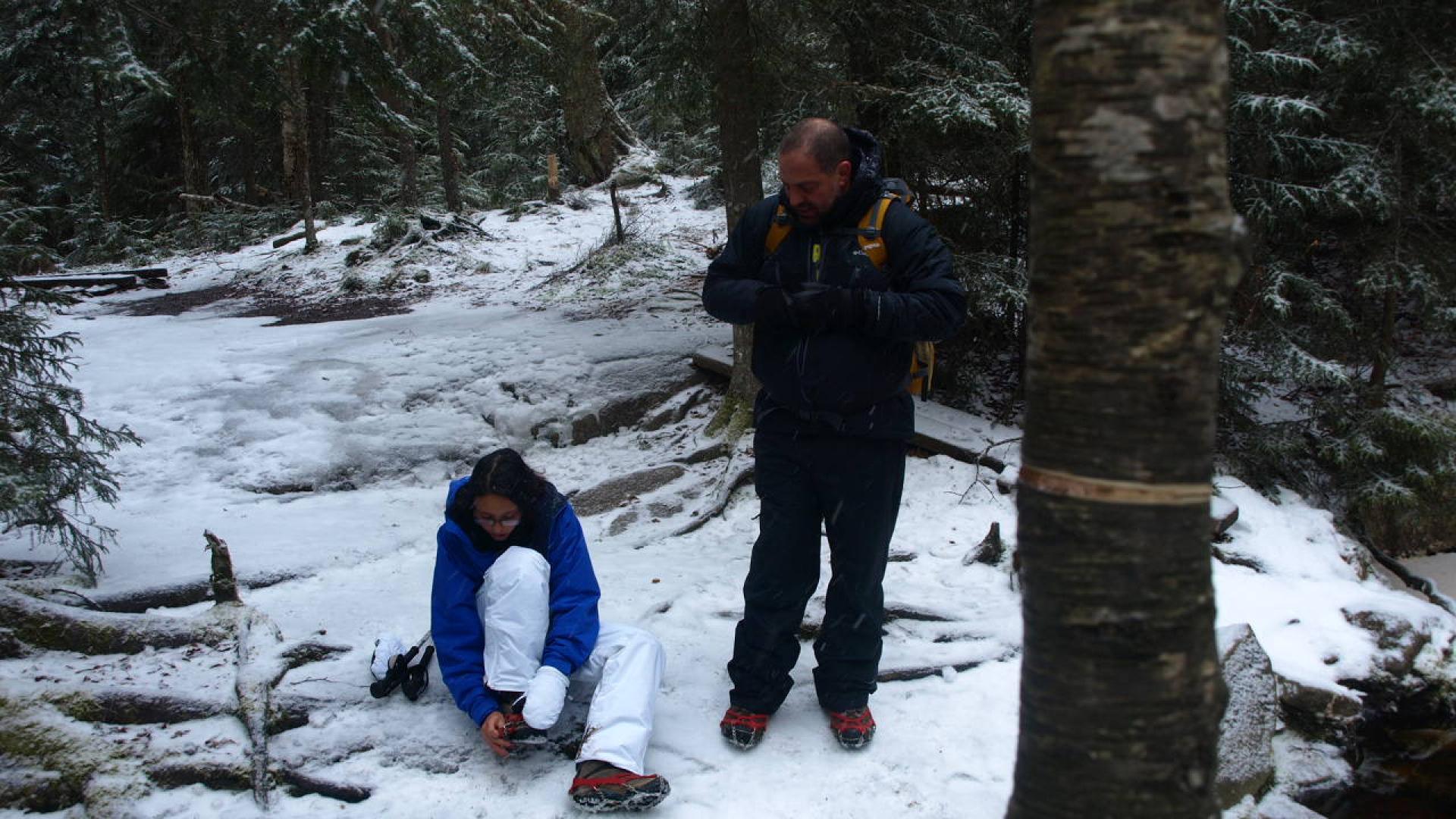What's the one thing you need to hike safely on icy terrain?
The snow and ice is here, sorta, and while the snow might not stick around for too long, the cold weather will come back around and produce some pretty darn good ice. No matter the course of the future, the current conditions are what you should think about. And in most areas, especially below 3000 feet, there is more ice than true snow coverage – this last warm spell didn’t help matters any. With that being said, get out your traction devices and I’m not necessarily referring to snowshoes. For right now just bring your Microspikes, Yaktrax, Stabilizers or similar traction strap-on traction for your hiking boots.
I want to touch base a bit more on the types of traction out there that would be ideal for the Champlain Valley Region, especially since snowshoes could be overkill in some areas. There are four highly used devices for traction on icy terrain that might interest you.
Microspikes
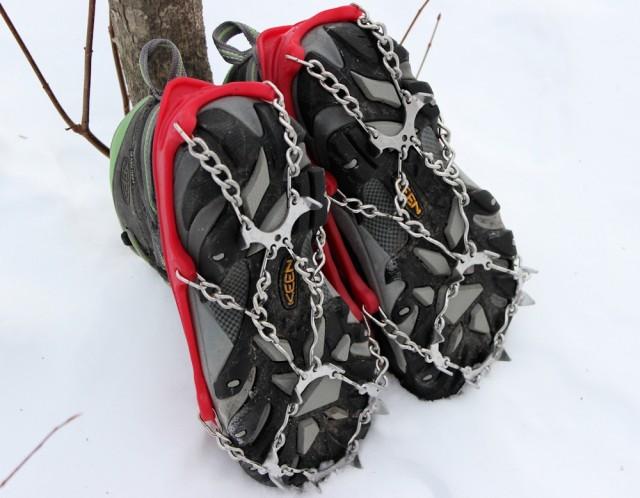
These are the most used traction device in the Adirondacks, and you may see many while you are out there pounding the trails. They come in black or red colors, but the red seems to be the most popular and most noticed. They come in sizes XS-XL, use the sizing chart on the back of the box, it is fairly accurate. However, if you find yourself on the edge of any sizing it’s best to try them on with the boot you want them to fit. Typically, if you are on the small end, you could size down, if you are on the top end, stay in that range. I have found if they are too big, they tend to twist a bit on the descent. They are made of a highly elastic rubber that stretches over the boot to hold them in place. The bottom of the device has several spikes which are not very sharp. The spikes do not need to be sharp to provide adequate traction; your weight will provide the force. If trying them on always use the boot they are being sized for, different boots have different shapes, even if the sizing is the same. Be sure to store these in a small sack to protect your other gear while in your pack and never store them too long when they are wet. Keep in a cool, dry place to avoid the rubber from cracking out over time. Cost: $60
Yaktrax
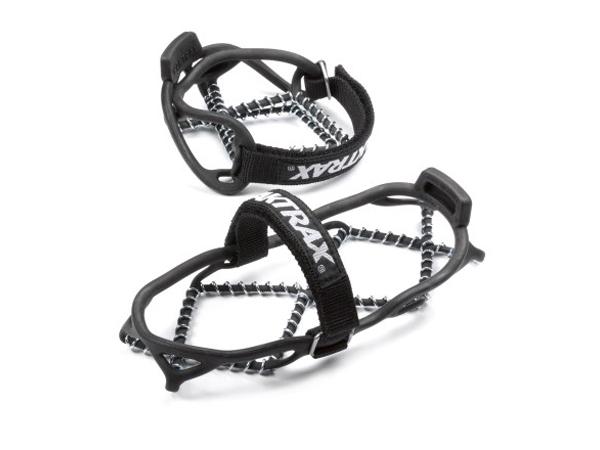
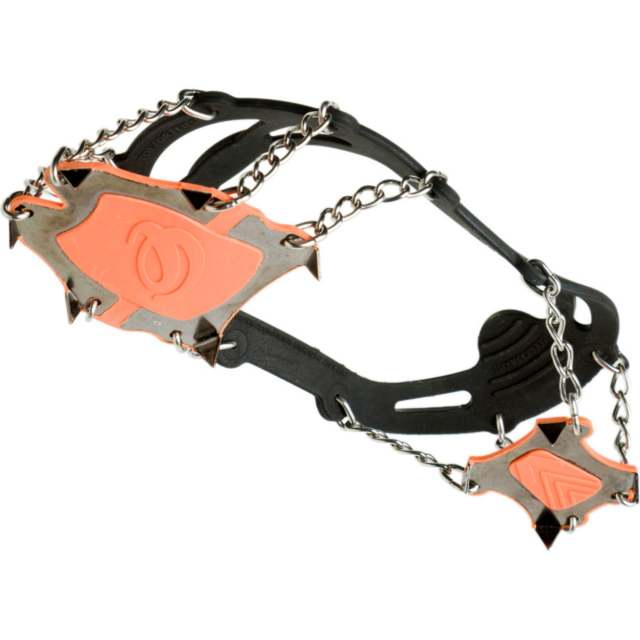
There are several versions of these. All models are a highly elastic rubber and should be tried on at the shop for an accurate fit. While you don’t see these as often on the trails you may find a random one or two strewn along the trail. They tend to fall off frequently even without notice. This is usually due to not having the proper size or not using the proper model for the activity. They come in an assortment of colors and are sized XXS-XXL depending on model.
- Walker - These are made for walking around town or flat trails, do not bring these into the mountains. These have a wire spring traction device, they are not very strong and will fall off the foot in extreme conditions. Cost: $20
- Pro - These have a strap over the top and are a bit more aggressive. These can be used adequately on rolling hills or small peaks and around town. The wire spring traction device is a bit stronger and they stay on your feet better. Cost: $30
- Runner - These were designed for trail and road running in the winter and work well on moderately steep terrain. Also, they have a wire spring traction device and stay on the feet well, but tend to twist a bit when descending steeper terrain. Cost: $40
- XTR - This is the model for the mountains, steeper terrain, flat hiking, rolling hills and even trail running. These are similar to the Microspikes outlined above. They also have a spike traction device on the bottom for ultimate footing and more extreme conditions. Cost: $60
Stabil-icers
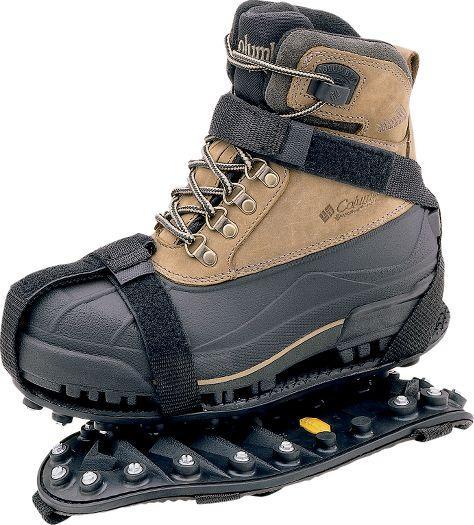
Original - This traction device used to be the most popular, especially for those in the construction industry. The design is simply a boot sole with traction that goes under your hiking boot. The stiff sole is equipped with removable and replaceable screws for traction. They come in black and are sized from XS-XL. These work well for rolling hills, but don’t give the best traction for steeper mountain terrain, but with careful foot placement they do work adequately. If you do use these, be sure to bring extra screws and a screw driver to replace the ones that fall out, because they will. Cost: $45
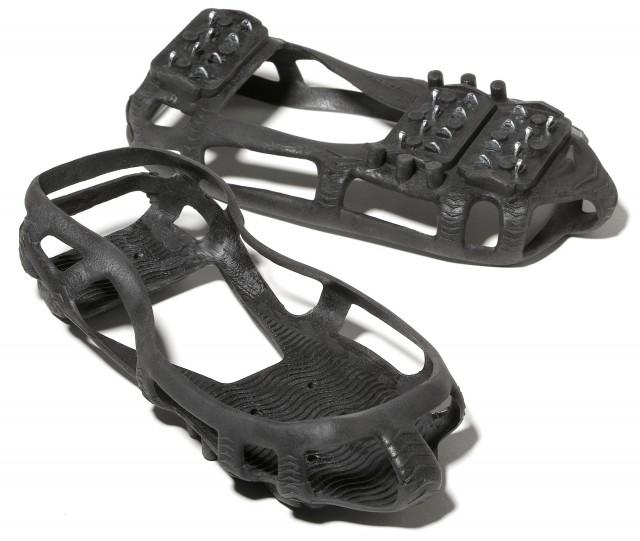
Lite - These are a much lighter version and are similar to other light traction devices. The small spikes on the bottom are not very aggressive and are adequate for flat hiking or around the yard and town on icy days. They are sized from S-XL and come in a few different colors. Cost: $20
Screws
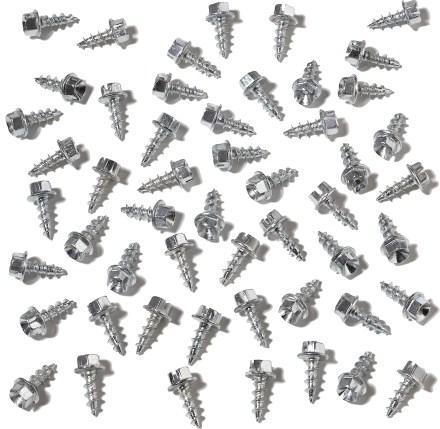
This is a final measure and by no means should be a first choice. Many boots are equipped with deep, thick, hard soles, with deep lugs for traction. In cases like this, screws could be used directly into the boot. Be sure to use the correct length screw as to not penetrate the inner boot and essentially your foot. While this is a very cheap alternative, there are setbacks. One: you are putting holes in your boot. Two: they are not easily removed and replaced, so your boot essentially needs to stay a hiking boot with screws in the bottom, unless you have extra time on your hands to do the work. Consider these similar to studded winter tires for your car – just leave the studs in all season. Three: the boots will now rub the decking of a pair of snowshoes which can cause premature holes to form, ruining your gear. Four: you will sound like a tap dancer when you walk into a shop to get a snack on the drive, and some and they are very slippery on floors. Cost: A dime a dozen
So that is a brief overview of a few traction devices on the market. There are many more styles, models, brands and such kicking around, but these are the ones you will see the most. Need a set of traction devices, check out a local gear shop for more details and pricing.
